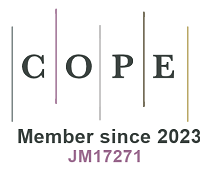REFERENCES
1. Frias JPGL, Nash R. Microplastics: finding a consensus on the definition. Mar Pollut Bull 2019;138:145-7.
2. Allen S, Allen D, Karbalaei S, Maselli V, Walker TR. Micro(nano)plastics sources, fate, and effects: what we know after ten years of research. J Hazard Mater Adv 2022;6:100057.
3. Villarrubia-gómez P, Cornell SE, Fabres J. Marine plastic pollution as a planetary boundary threat - the drifting piece in the sustainability puzzle. Mar Policy 2018;96:213-20.
4. Backhaus T, Wagner M. Microplastics in the environment: much ado about nothing? A debate. Glob Chall 2020;4:1900022.
5. Plastics - the facts 2022. Plastics Europe. Available from: https://plasticseurope.org/knowledge-hub/plastics-the-facts-2022/. [Last accessed on 26 Feb 2024].
6. Geyer R, Jambeck JR, Law KL. Production, use, and fate of all plastics ever made. Sci Adv 2017;3:e1700782.
7. Thompson RC, Olsen Y, Mitchell RP, et al. Lost at sea: where is all the plastic? Science 2004;304:838.
8. Carpenter EJ, Anderson SJ, Harvey GR, Miklas HP, Peck BB. Polystyrene spherules in coastal waters. Science 1972;178:749-50.
9. Mehinto AC, Coffin S, Koelmans AA, et al. Risk-based management framework for microplastics in aquatic ecosystems. Micropl Nanopl 2022;2:17.
10. Masura J, Baker J, Foster G, Arthur C, Herring C. Laboratory methods for the analysis of microplastics in the marine environment: recommendations for quantifying synthetic particles in waters and sediments. 2015. Available from: https://repository.library.noaa.gov/view/noaa/10296/noaa_10296_DS1.pdf. [Last accessed on 26 Feb 2024].
11. Hartmann NB, Hüffer T, Thompson RC, et al. Are we speaking the same language? Recommendations for a definition and categorization framework for plastic debris. Environ Sci Technol 2019;53:1039-47.
12. da Costa JP, Santos PSM, Duarte AC, Rocha-Santos T. (Nano)plastics in the environment - sources, fates and effects. Sci Total Environ 2016;566-567:15-26.
14. Cole M, Lindeque P, Halsband C, Galloway TS. Microplastics as contaminants in the marine environment: a review. Mar Pollut Bull 2011;62:2588-97.
15. Boucher J, Friot D. Primary microplastics in the oceans: a global evaluation of sources. IUCN International Union for Conservation of Nature. 2017. Available from: https://portals.iucn.org/library/sites/library/files/documents/2017-002-En.pdf. [Last accessed on 26 Feb 2024].
16. Emissions of primary particles and secondary particulate matter precursors. European Environment Agency. 2017. Available from: https://www.eea.europa.eu/data-and-maps/indicators/emissions-of-primary-particles-and-1. [Last accessed on 26 Feb 2024].
17. Walker TR, Fequet L. Current trends of unsustainable plastic production and micro(nano)plastic pollution. TrAC Trends Anal Chem 2023;160:116984.
19. Rodrigues MO, Abrantes N, Gonçalves FJM, Nogueira H, Marques JC, Gonçalves AMM. Spatial and temporal distribution of microplastics in water and sediments of a freshwater system (Antuã River, Portugal). Sci Total Environ 2018;633:1549-59.
21. Man-made fibers continue to grow. Textile World. 2015. Available from: https://www.textileworld.com/textile-world/fiber-world/2015/02/man-made-fibers-continue-to-grow/. [Last accessed on 26 Feb 2024].
22. A new textiles economy: redesigning fashion’s future. Ellen MacArthur Foundation. 2017. Available from: https://www.ellenmacarthurfoundation.org/a-new-textiles-economy. [Last accessed on 26 Feb 2024].
24. Liu J, Yang Y, Ding J, Zhu B, Gao W. Microfibers: a preliminary discussion on their definition and sources. Environ Sci Pollut Res Int 2019;26:29497-501.
25. Guidance on monitoring of marine litter in European seas. 2013. Available from: https://op.europa.eu/en/publication-detail/-/publication/76da424f-8144-45c6-9c5b-78c6a5f69c5d/language-en. [Last accessed on 26 Feb 2024].
26. Uddin S, Fowler SW, Habibi N, Behbehani M. Micro-nano plastic in the aquatic environment: methodological problems and challenges. Animals 2022;12:297.
27. EPA’s microplastic beach protocol. United States Environmental Protection Agency. 2021. Available from: https://www.epa.gov/system/files/documents/2021-09/microplastic-beach-protocol_sept-2021.pdf. [Last accessed on 26 Feb 2024].
28. Prata JC, Manana MJ, da Costa JP, Duarte AC, Rocha-santos T. What is the minimum volume of sample to find small microplastics: laboratory experiments and sampling of Aveiro Lagoon and Vouga River, Portugal. Water 2020;12:1219.
29. Eo S, Hong SH, Song YK, Han GM, Shim WJ. Spatiotemporal distribution and annual load of microplastics in the Nakdong River, South Korea. Water Res 2019;160:228-37.
30. Lenaker PL, Baldwin AK, Corsi SR, Mason SA, Reneau PC, Scott JW. Vertical distribution of microplastics in the water column and surficial sediment from the Milwaukee River Basin to Lake Michigan. Environ Sci Technol 2019;53:12227-37.
31. Zhang S, Wang J, Liu X, et al. Microplastics in the environment: a review of analytical methods, distribution, and biological effects. TrAC Trends Anal Chem 2019;111:62-72.
32. Kaiser D, Kowalski N, Waniek JJ. Effects of biofouling on the sinking behavior of microplastics. Environ Res Lett 2017;12:124003.
33. Cai M, He H, Liu M, et al. Lost but can’t be neglected: Huge quantities of small microplastics hide in the South China Sea. Sci Total Environ 2018;633:1206-16.
34. Panel on Contaminants in the Food Chain (CONTAM). Presence of microplastics and nanoplastics in food, with particular focus on seafood. EFS2 2016;14:e04501.
35. Picó Y, Barceló D. Analysis of microplastics and nanoplastics: How green are the methodologies used? Curr Opin Green Sustain Chem 2021;31:100503.
36. Di Mauro R, Kupchik MJ, Benfield MC. Abundant plankton-sized microplastic particles in shelf waters of the northern Gulf of Mexico. Environ Pollut 2017;230:798-809.
37. Lenz R, Labrenz M. Small microplastic sampling in water: development of an encapsulated filtration device. Water 2018;10:1055.
38. Koelmans AA, Redondo-Hasselerharm PE, Mohamed Nor NH, Kooi M. Solving the nonalignment of methods and approaches used in microplastic research to consistently characterize risk. Environ Sci Technol 2020;54:12307-15.
39. He D, Zhang X, Hu J. Methods for separating microplastics from complex solid matrices: comparative analysis. J Hazard Mater 2021;409:124640.
40. Coppock RL, Cole M, Lindeque PK, Queirós AM, Galloway TS. A small-scale, portable method for extracting microplastics from marine sediments. Environ Pollut 2017;230:829-37.
41. D’Hont A, Gittenberger A, Leuven RSEW, Hendriks AJ. Dropping the microbead: source and sink related microplastic distribution in the Black Sea and Caspian Sea basins. Mar Pollut Bull 2021;173:112982.
42. Lechthaler S, Hildebrandt L, Stauch G, Schüttrumpf H. Canola oil extraction in conjunction with a plastic free separation unit optimises microplastics monitoring in water and sediment. Anal Methods 2020;12:5128-39.
43. Xumiao L, Prata JC, Alves JR, Duarte AC, Rocha-santos T, Cerqueira M. Airborne microplastics and fibers in indoor residential environments in Aveiro, Portugal. Environ Adv 2021;6:100134.
44. Hall JE, Guyton AC. Guyton and hall textbook of medical physiology. 2011. Available from: https://repository.poltekkes-kaltim.ac.id/1147/1/Guyton%20and%20Hall%20Textbook%20of%20Medical%20Physiology%20(%20PDFDrive%20).pdf. [Last accessed on 26 Feb 2024].
45. Silva DM, Almeida CMR, Guardiola F, Rodrigues SM, Ramos S. Optimization of an analytical protocol for the extraction of microplastics from seafood samples with different levels of fat. Molecules 2022;27:5172.
46. Khan MT, Cheng YL, Hafeez S, Tsang YF, Yang J, Nawab A. Microplastics in wastewater. In: Rocha-santos T, Costa M, Mouneyrac C, editors. Handbook of microplastics in the environment. Cham: Springer; 2020. pp. 1-33.
47. Qiu Q, Tan Z, Wang J, Peng J, Li M, Zhan Z. Extraction, enumeration and identification methods for monitoring microplastics in the environment. Estuar Coast Shelf Sci 2016;176:102-9.
48. Munno K, Helm PA, Jackson DA, Rochman C, Sims A. Impacts of temperature and selected chemical digestion methods on microplastic particles. Environ Toxicol Chem 2018;37:91-8.
49. Bellon D, Zamudio WH, Tiria LC, Durán SM, Useche IE, Peña J. Effect of expanded polystyrene waste in the creation of waterproofing paint. J Phys Conf Ser 2019;1386:012075.
50. Cai H, Chen M, Chen Q, Du F, Liu J, Shi H. Microplastic quantification affected by structure and pore size of filters. Chemosphere 2020;257:127198.
51. Rai PK, Kumar V, Sonne C, Lee SS, Brown RJ, Kim K. Progress, prospects, and challenges in standardization of sampling and analysis of micro- and nano-plastics in the environment. J Clean Prod 2021;325:129321.
52. Zhao K, Wei Y, Dong J, et al. Separation and characterization of microplastic and nanoplastic particles in marine environment. Environ Pollut 2022;297:118773.
53. Tse Y, Lo H, Chan SM, Sze ET. Flow cytometry as a rapid alternative to quantify small microplastics in environmental water samples. Water 2022;14:1436.
54. Monteiro SS, Rocha-Santos T, Prata JC, et al. A straightforward method for microplastic extraction from organic-rich freshwater samples. Sci Total Environ 2022;815:152941.
55. Hidalgo-Ruz V, Gutow L, Thompson RC, Thiel M. Microplastics in the marine environment: a review of the methods used for identification and quantification. Environ Sci Technol 2012;46:3060-75.
56. Zhang S, Yang X, Gertsen H, Peters P, Salánki T, Geissen V. A simple method for the extraction and identification of light density microplastics from soil. Sci Total Environ 2018;616-7:1056-65.
57. Campbell SH, Williamson PR, Hall BD, Schindler D. Microplastics in the gastrointestinal tracts of fish and the water from an urban prairie creek. FACETS 2017;2:395-409.
58. Beckingham B, Apintiloaiei A, Moore C, Brandes J. Hot or not: systematic review and laboratory evaluation of the hot needle test for microplastic identification. Micropl Nanopl 2023;3:8.
59. Prata JC, Castro JL, da Costa JP, Duarte AC, Cerqueira M, Rocha-Santos T. An easy method for processing and identification of natural and synthetic microfibers and microplastics in indoor and outdoor air. MethodsX 2020;7:1-9.
60. Prata JC, Reis V, Matos JTV, da Costa JP, Duarte AC, Rocha-Santos T. A new approach for routine quantification of microplastics using Nile Red and automated software (MP-VAT). Sci Total Environ 2019;690:1277-83.
61. Hengstmann E, Fischer EK. Nile red staining in microplastic analysis-proposal for a reliable and fast identification approach for large microplastics. Environ Monit Assess 2019;191:612.
62. Mason SA, Welch VG, Neratko J. Synthetic polymer contamination in bottled water. Front Chem 2018;6:407.
63. Prata JC, da Costa JP, Fernandes AJS, da Costa FM, Duarte AC, Rocha-Santos T. Selection of microplastics by Nile Red staining increases environmental sample throughput by micro-Raman spectroscopy. Sci Total Environ 2021;783:146979.
64. Araujo CF, Nolasco MM, Ribeiro AMP, Ribeiro-Claro PJA. Identification of microplastics using Raman spectroscopy: latest developments and future prospects. Water Res 2018;142:426-40.
65. Brandt J, Fischer F, Kanaki E, Enders K, Labrenz M, Fischer D. Assessment of subsampling strategies in microspectroscopy of environmental microplastic samples. Front Environ Sci 2021;8:579676.
66. Oßmann BE, Sarau G, Holtmannspötter H, Pischetsrieder M, Christiansen SH, Dicke W. Small-sized microplastics and pigmented particles in bottled mineral water. Water Res 2018;141:307-16.
67. Huang Y, Xu EG. Black microplastic in plastic pollution: undetected and underestimated? Water Emerg Contam Nanoplastics 2022;1:14.
68. Cowger W, Steinmetz Z, Gray A, et al. Microplastic spectral classification needs an open source community: open specy to the rescue! Anal Chem 2021;93:7543-8.
69. Yang J, Monnot M, Sun Y, et al. Microplastics in different water samples (seawater, freshwater, and wastewater): methodology approach for characterization using micro-FTIR spectroscopy. Water Res 2023;232:119711.
70. Brandon J, Goldstein M, Ohman MD. Long-term aging and degradation of microplastic particles: comparing in situ oceanic and experimental weathering patterns. Mar Pollut Bull 2016;110:299-308.
71. Arkatkar A, Arutchelvi J, Bhaduri S, Uppara PV, Doble M. Degradation of unpretreated and thermally pretreated polypropylene by soil consortia. Int Biodeterior Biodegrad 2009;63:106-11.
72. Knahr K, Pospischill M, Köttig P, Schneider W, Plenk H Jr. Retrieval analyses of highly cross-linked polyethylene acetabular liners four and five years after implantation. J Bone Joint Surg Br 2007;89:1036-41.
73. Dümichen E, Eisentraut P, Bannick CG, Barthel AK, Senz R, Braun U. Fast identification of microplastics in complex environmental samples by a thermal degradation method. Chemosphere 2017;174:572-84.
74. Picó Y, Barceló D. Pyrolysis gas chromatography-mass spectrometry in environmental analysis: Focus on organic matter and microplastics. TrAC Trends Anal Chem 2020;130:115964.
75. Hermabessiere L, Himber C, Boricaud B, et al. Optimization, performance, and application of a pyrolysis-GC/MS method for the identification of microplastics. Anal Bioanal Chem 2018;410:6663-76.
76. Hong Y, Oh J, Lee I, et al. Total-organic-carbon-based quantitative estimation of microplastics in sewage. Chem Eng J 2021;423:130182.
77. Leusch FDL, Ziajahromi S. Converting mg/L to particles/L: reconciling the occurrence and toxicity literature on microplastics. Environ Sci Technol 2021;55:11470-2.
78. Zhu C, Kanaya Y, Nakajima R, et al. Characterization of microplastics on filter substrates based on hyperspectral imaging: laboratory assessments. Environ Pollut 2020;263:114296.
79. Wu P, Tang Y, Cao G, et al. Determination of environmental micro(nano)plastics by matrix-assisted laser desorption/ionization-time-of-flight mass spectrometry. Anal Chem 2020;92:14346-56.
80. Estahbanati MRK, Rostami S, Ghasemian M, Kiendrebeogo M, Drogui P, Tyagi RD. Chapter 5 - quantitative and qualitative identification, characterization, and analysis of microplastics and nanoplastics in water. In: Current developments in biotechnology and bioengineering. Elsevier; 2023. pp. 99-123.
81. Akhatova F, Ishmukhametov I, Fakhrullina G, Fakhrullin R. Nanomechanical atomic force microscopy to probe cellular microplastics uptake and distribution. Int J Mol Sci 2022;23:806.
82. Cai H, Xu EG, Du F, Li R, Liu J, Shi H. Analysis of environmental nanoplastics: progress and challenges. Chem Eng J 2021;410:128208.
83. Zuccarello P, Ferrante M, Cristaldi A, et al. Reply for comment on “Exposure to microplastics (< 10 μm) associated to plastic bottles mineral water consumption: The first quantitative study by Zuccarello et al. [Water Research 157 (2019) 365–371]”. Water Res 2019;157:115077.
84. Oßmann B, Schymanski D, Ivleva NP, et al. Comment on “exposure to microplastics (< 10 μm) associated to plastic bottles mineral water consumption: the first quantitative study by Zuccarello et al. [Water Research 157 (2019) 365-371]”. Water Res 2019;162:516-7.
85. Cadiou JF, Gerigny O, Koren Š, et al. Lessons learned from an intercalibration exercise on the quantification and characterisation of microplastic particles in sediment and water samples. Mar Pollut Bull 2020;154:111097.
86. Belz S, Bianchi I, Claudia C, et al. Current status of the quantification of microplastics in water - results of a JRC/BAM inter-laboratory comparison study on PET in water. EUR 30799 EN. Publications Office of the European Union. 2021. Available from: https://publications.jrc.ec.europa.eu/repository/handle/JRC125383. [Last accessed on 26 Feb 2024].
87. Isobe A, Buenaventura NT, Chastain S, et al. An interlaboratory comparison exercise for the determination of microplastics in standard sample bottles. Mar Pollut Bull 2019;146:831-7.
88. Martínez-Francés E, van Bavel B, Hurley R, et al. Innovative reference materials for method validation in microplastic analysis including interlaboratory comparison exercises. Anal Bioanal Chem 2023;415:2907-19.
89. Tsangaris C, Panti C, Compa M, et al. Interlaboratory comparison of microplastic extraction methods from marine biota tissues: a harmonization exercise of the Plastic Busters MPAs project. Mar Pollut Bull 2021;164:111992.
90. Müller YK, Wernicke T, Pittroff M, et al. Microplastic analysis-are we measuring the same? Results on the first global comparative study for microplastic analysis in a water sample. Anal Bioanal Chem 2020;412:555-60.
91. van Mourik LM, Crum S, Martinez-Frances E, et al. Results of WEPAL-QUASIMEME/NORMANs first global interlaboratory study on microplastics reveal urgent need for harmonization. Sci Total Environ 2021;772:145071.
92. De Frond H, Thornton Hampton L, Kotar S, et al. Monitoring microplastics in drinking water: an interlaboratory study to inform effective methods for quantifying and characterizing microplastics. Chemosphere 2022;298:134282.
93. Becker R, Altmann K, Sommerfeld T, Braun U. Quantification of microplastics in a freshwater suspended organic matter using different thermoanalytical methods - outcome of an interlaboratory comparison. J Anal Appl Pyrolysis 2020;148:104829.
94. An L, Liu Q, Deng Y, Wu W, Gao Y, Ling W. Sources of microplastic in the environment. In: He D, Luo Y, editors. Microplastics in terrestrial environments. Cham: Springer; 2020. pp. 143-59.
95. Patrício Silva AL, Prata JC, Walker TR, et al. Increased plastic pollution due to COVID-19 pandemic: challenges and recommendations. Chem Eng J 2021;405:126683.
96. Khan MT, Shah IA, Hossain MF, et al. Personal protective equipment (PPE) disposal during COVID-19: an emerging source of microplastic and microfiber pollution in the environment. Sci Total Environ 2023;860:160322.
97. Schmidt C, Krauth T, Wagner S. Export of plastic debris by rivers into the sea. Environ Sci Technol 2017;51:12246-53.
98. Dong H, Wang L, Wang X, et al. Microplastics in a remote lake basin of the Tibetan Plateau: impacts of atmospheric transport and glacial melting. Environ Sci Technol 2021;55:12951-60.
99. Kooi M, Nes EHV, Scheffer M, Koelmans AA. Ups and downs in the ocean: effects of biofouling on vertical transport of microplastics. Environ Sci Technol 2017;51:7963-71.
100. De-la-Torre GE, Dioses-Salinas DC, Pizarro-Ortega CI, Santillán L. New plastic formations in the Anthropocene. Sci Total Environ 2021;754:142216.
101. Silva CJM, Silva ALP, Gravato C, Pestana JLT. Ingestion of small-sized and irregularly shaped polyethylene microplastics affect Chironomus riparius life-history traits. Sci Total Environ 2019;672:862-8.
102. Ory NC, Gallardo C, Lenz M, Thiel M. Capture, swallowing, and egestion of microplastics by a planktivorous juvenile fish. Environ Pollut 2018;240:566-73.
103. Browne MA, Dissanayake A, Galloway TS, Lowe DM, Thompson RC. Ingested microscopic plastic translocates to the circulatory system of the mussel, Mytilus edulis (L). Environ Sci Technol 2008;42:5026-31.
104. Welden NA, Abylkhani B, Howarth LM. The effects of trophic transfer and environmental factors on microplastic uptake by plaice, Pleuronectes plastessa, and spider crab, Maja squinado. Environ Pollut 2018;239:351-8.
105. Duis K, Coors A. Microplastics in the aquatic and terrestrial environment: sources (with a specific focus on personal care products), fate and effects. Environ Sci Eur 2016;28:2.
106. Miller ME, Hamann M, Kroon FJ. Bioaccumulation and biomagnification of microplastics in marine organisms: a review and meta-analysis of current data. PLoS One 2020;15:e0240792.
107. Ding J, Sun C, He C, Li J, Ju P, Li F. Microplastics in four bivalve species and basis for using bivalves as bioindicators of microplastic pollution. Sci Total Environ 2021;782:146830.
108. Qu X, Su L, Li H, Liang M, Shi H. Assessing the relationship between the abundance and properties of microplastics in water and in mussels. Sci Total Environ 2018;621:679-86.
109. Foley CJ, Feiner ZS, Malinich TD, Höök TO. A meta-analysis of the effects of exposure to microplastics on fish and aquatic invertebrates. Sci Total Environ 2018;631-2:550-9.
110. Jeong J, Choi J. Adverse outcome pathways potentially related to hazard identification of microplastics based on toxicity mechanisms. Chemosphere 2019;231:249-55.
111. Lenz R, Enders K, Nielsen TG. Microplastic exposure studies should be environmentally realistic. Proc Natl Acad Sci U S A 2016;113:E4121-2.
112. Prata JC, Venâncio C, da Costa JP, Lopes I, Duarte AC, Rocha-Santos T. Considerations when using microplates and Neubauer counting chamber in ecotoxicity tests on microplastics. Mar Pollut Bull 2021;170:112615.
113. Jasinska EJ, Goss GG, Gillis PL, et al. Assessment of biomarkers for contaminants of emerging concern on aquatic organisms downstream of a municipal wastewater discharge. Sci Total Environ 2015;530-1:140-53.
114. Arias-Andres M, Kettner MT, Miki T, Grossart HP. Microplastics: New substrates for heterotrophic activity contribute to altering organic matter cycles in aquatic ecosystems. Sci Total Environ 2018;635:1152-9.
115. Cluzard M, Kazmiruk TN, Kazmiruk VD, Bendell LI. Intertidal concentrations of microplastics and their influence on ammonium cycling as related to the shellfish industry. Arch Environ Contam Toxicol 2015;69:310-9.
116. Carson HS, Colbert SL, Kaylor MJ, McDermid KJ. Small plastic debris changes water movement and heat transfer through beach sediments. Mar Pollut Bull 2011;62:1708-13.
117. Wan Y, Wu C, Xue Q, Hui X. Effects of plastic contamination on water evaporation and desiccation cracking in soil. Sci Total Environ 2019;654:576-82.
118. Miranda MN, Silva AMT, Pereira MFR. Microplastics in the environment: a DPSIR analysis with focus on the responses. Sci Total Environ 2020;718:134968.
119. Barros J, Seena S. Plastisphere in freshwaters: an emerging concern. Environ Pollut 2021;290:118123.
120. Zettler ER, Mincer TJ, Amaral-Zettler LA. Life in the “plastisphere”: microbial communities on plastic marine debris. Environ Sci Technol 2013;47:7137-46.
121. Yan Z, Liu Y, Zhang T, Zhang F, Ren H, Zhang Y. Analysis of microplastics in human feces reveals a correlation between fecal microplastics and inflammatory bowel disease status. Environ Sci Technol 2022;56:414-21.
122. Walczak AP, Hendriksen PJ, Woutersen RA, et al. Bioavailability and biodistribution of differently charged polystyrene nanoparticles upon oral exposure in rats. J Nanopart Res 2015;17:231.
123. Domenech J, Marcos R. Pathways of human exposure to microplastics, and estimation of the total burden. Curr Opin Food Sci 2021;39:144-51.
124. Snipes MB, Clem MF. Retention of microspheres in the rat lung after intratracheal instillation. Environ Res 1981;24:33-41.
125. Slack JD, Kanke M, Simmons GH, DeLuca PP. Acute hemodynamic effects and blood pool kinetics of polystyrene microspheres following intravenous administration. J Pharm Sci 1981;70:660-4.
126. Hartenstein V, Martinez P. Phagocytosis in cellular defense and nutrition: a food-centered approach to the evolution of macrophages. Cell Tissue Res 2019;377:527-47.
127. Prata JC. Microplastics and human health: Integrating pharmacokinetics. Crit Rev Environ Sci Technol 2023;53:1489-511.
128. Ho YW, Lim JY, Yeoh YK, et al. Preliminary findings of the high quantity of microplastics in faeces of Hong Kong residents. Toxics 2022;10:414.
129. Barceló D, Picó Y, Alfarhan AH. Microplastics: detection in human samples, cell line studies, and health impacts. Environ Toxicol Pharmacol 2023;101:104204.
130. A scientific perspective on microplastics in nature and society. Scientific Advice Mechanism. 2019. Available from: https://scientificadvice.eu/advice/a-scientific-perspective-on-microplastics-in-nature-and-society/. [Last accessed on 26 Feb 2024].
131. Kanke M, Simmons GH, Weiss DL, Bivins BA, DeLuca PP. Clearance of 141C3-labeled microspheres from blood and distribution in specific organs following intravenous and intraarterial administration in beagle dogs. J Pharm Sci 1980;69:755-62.







